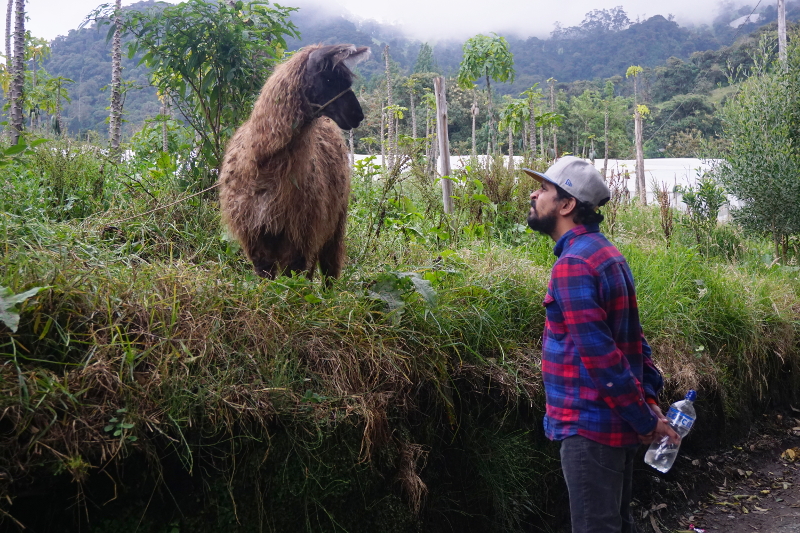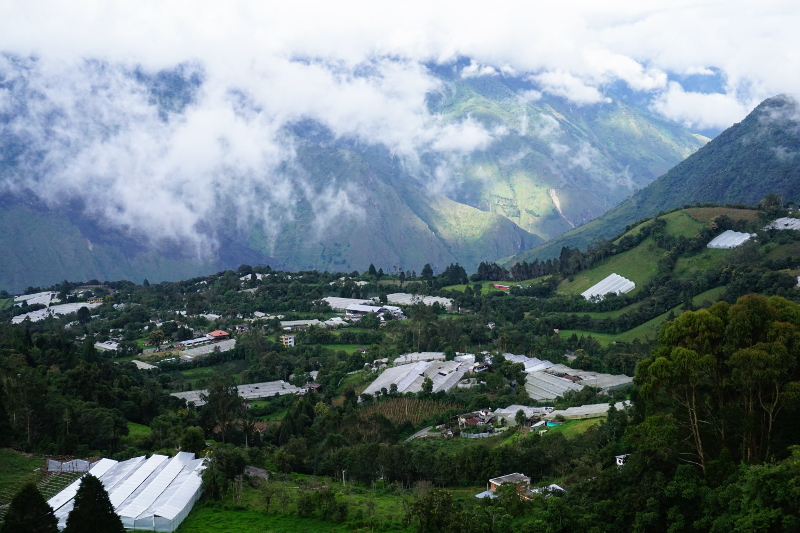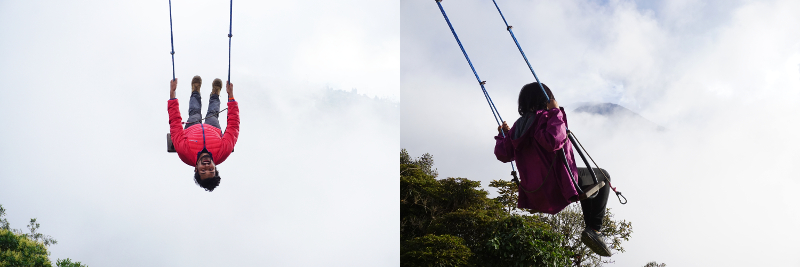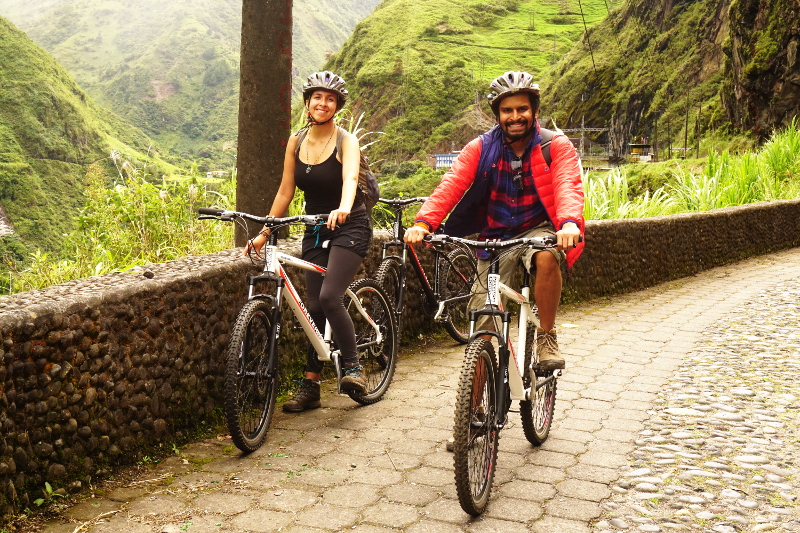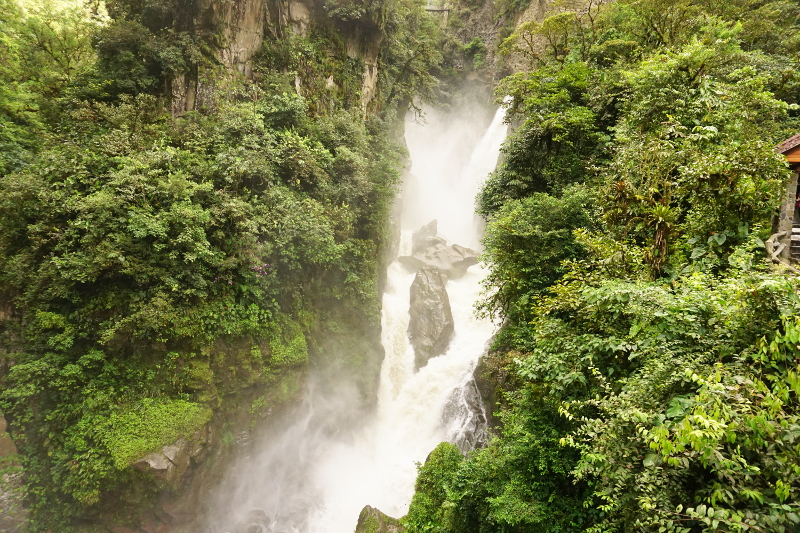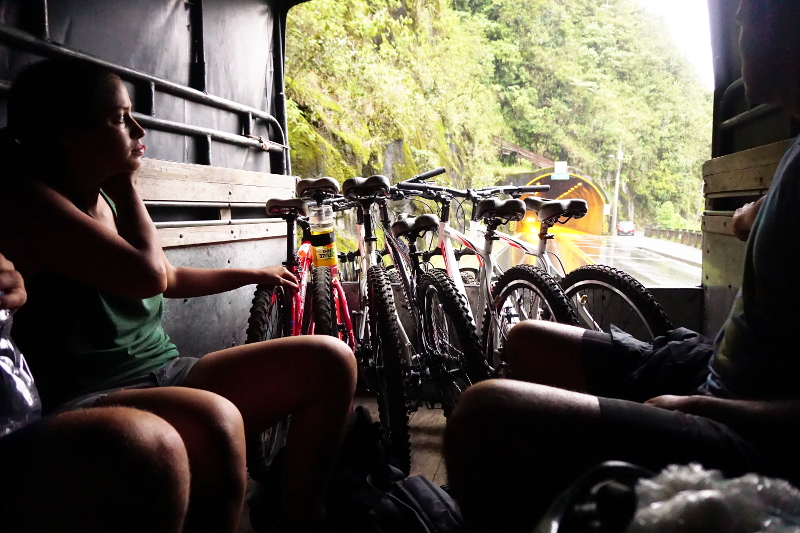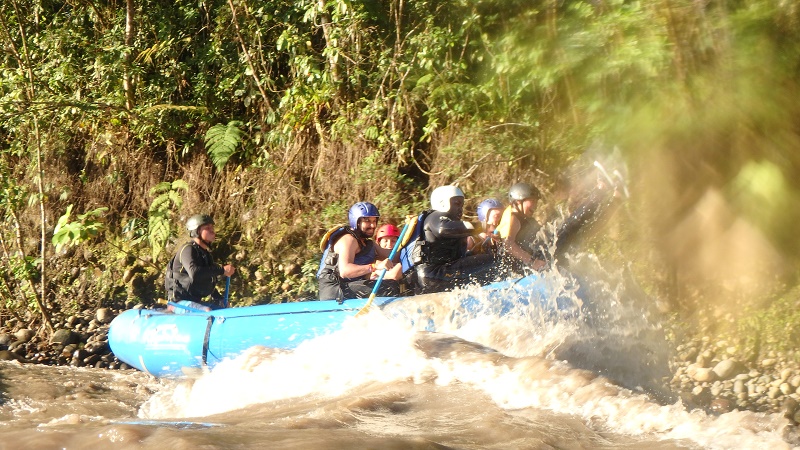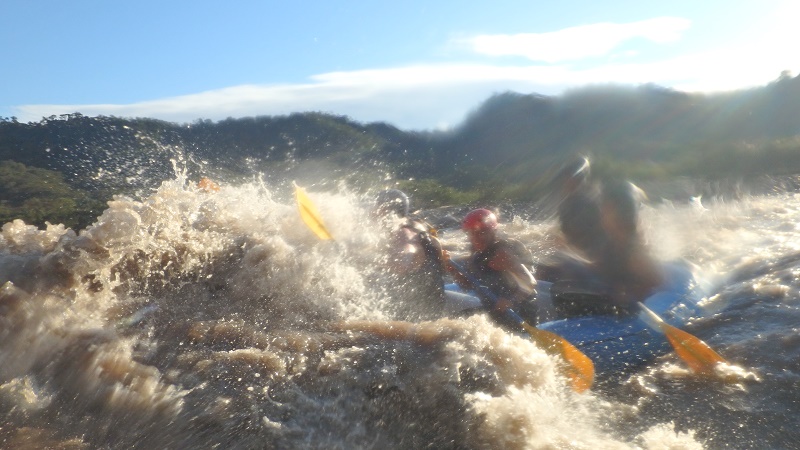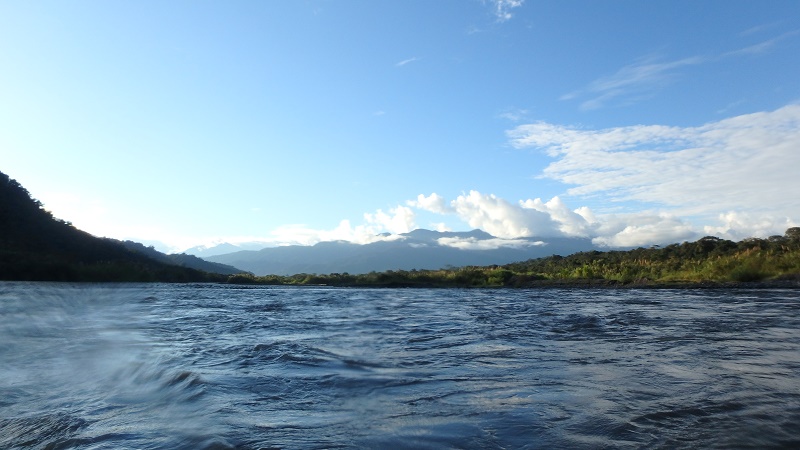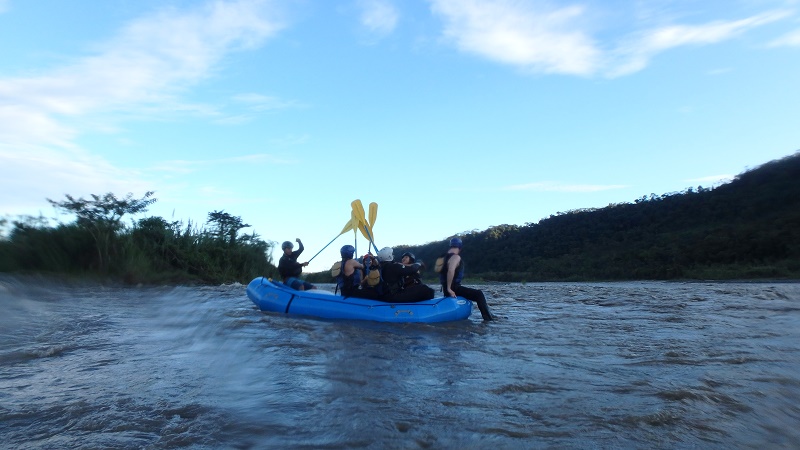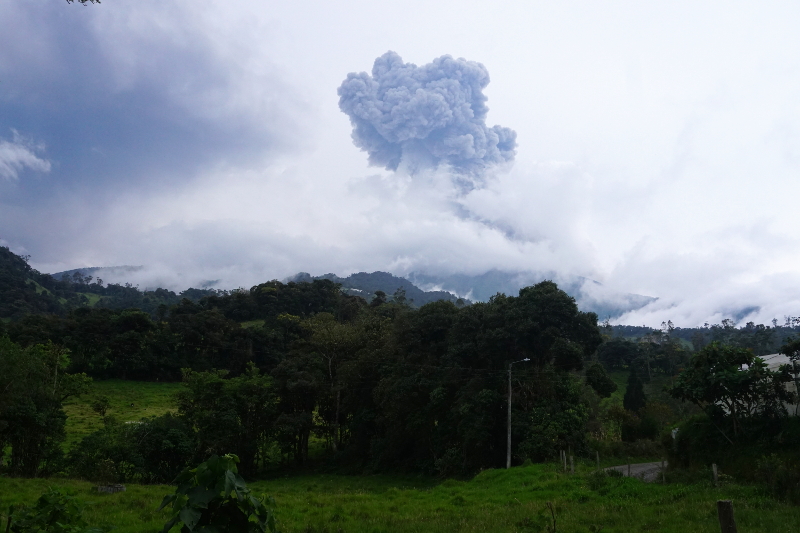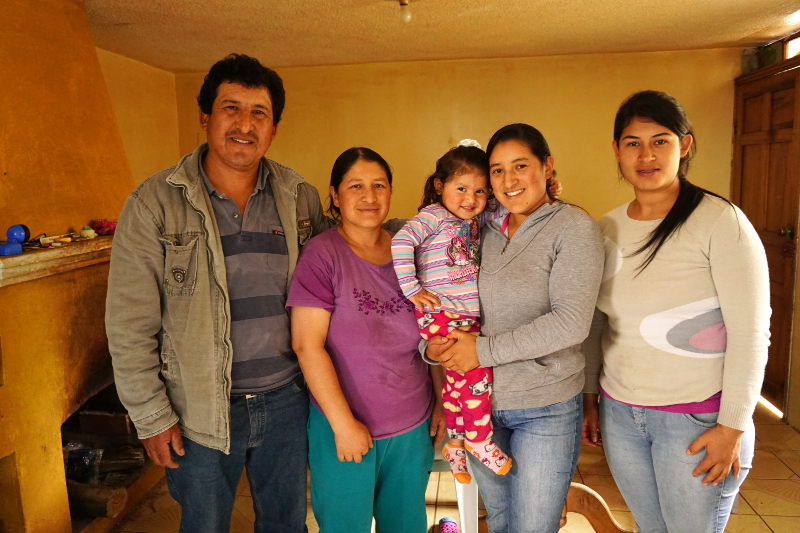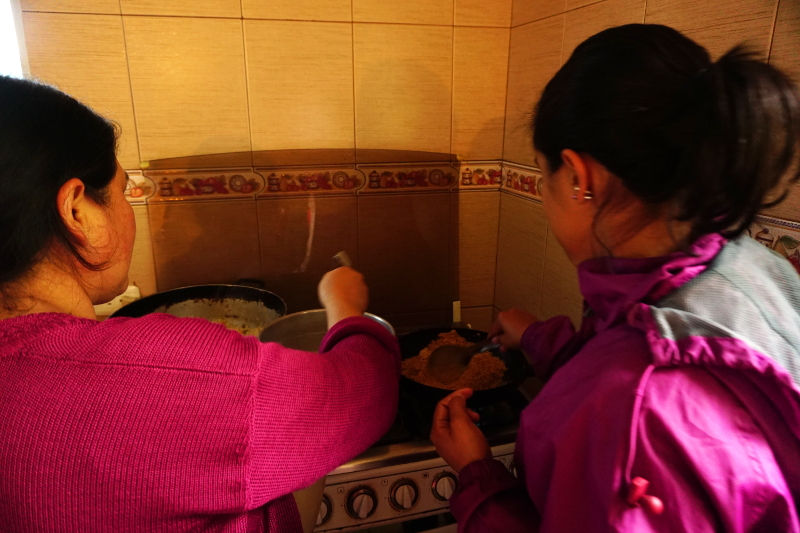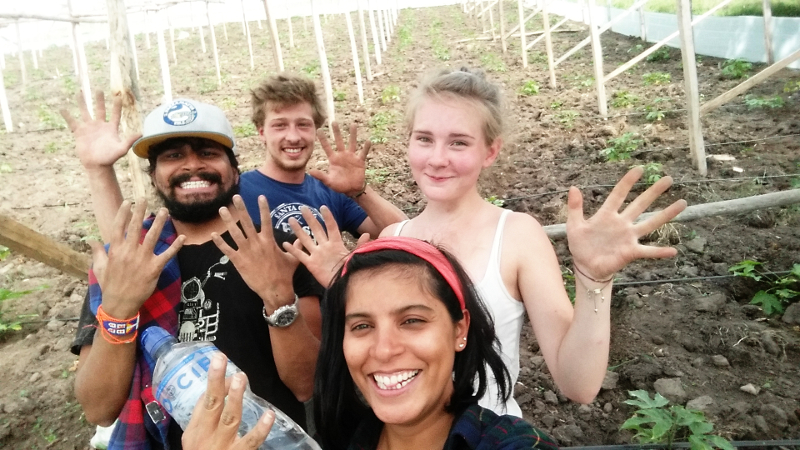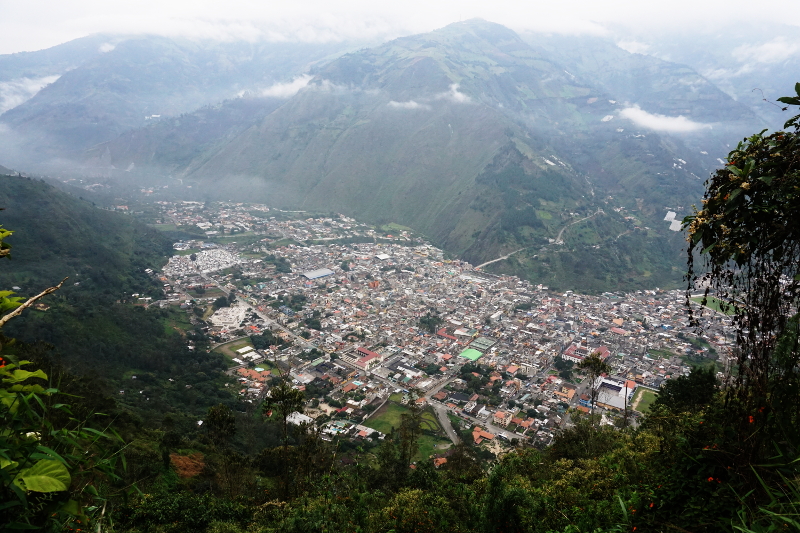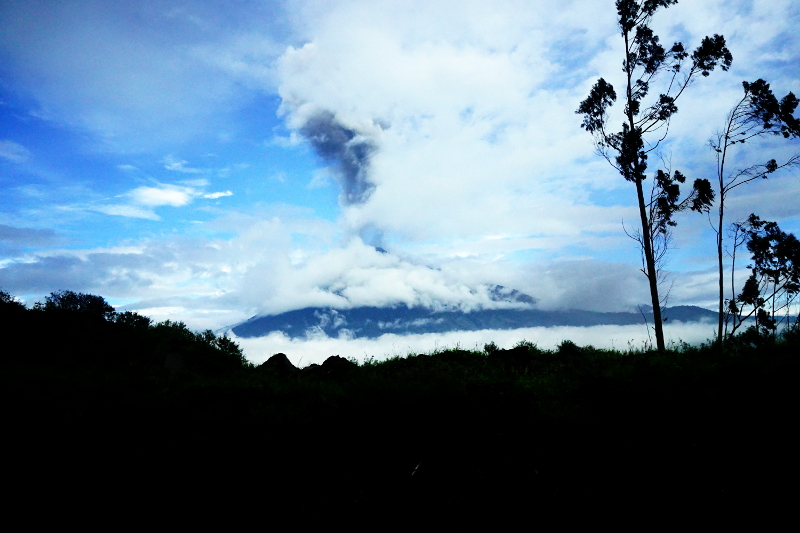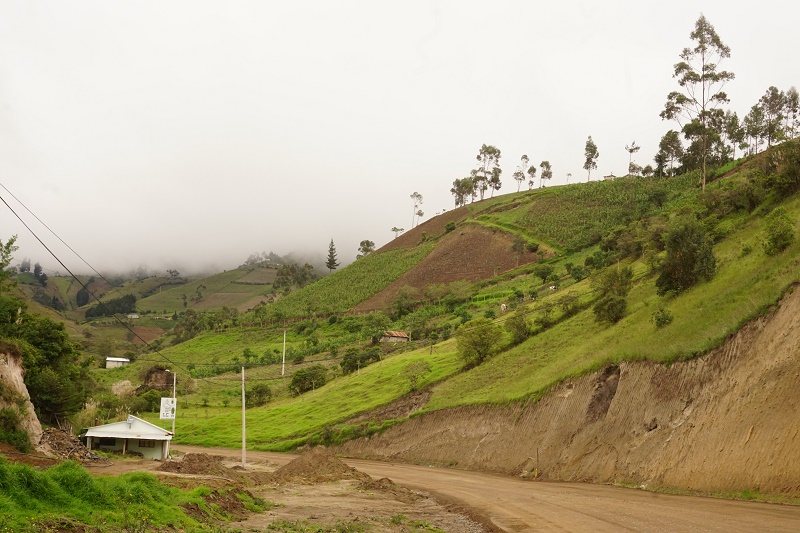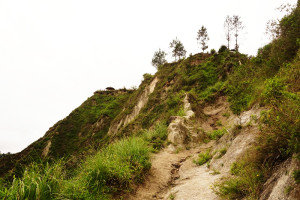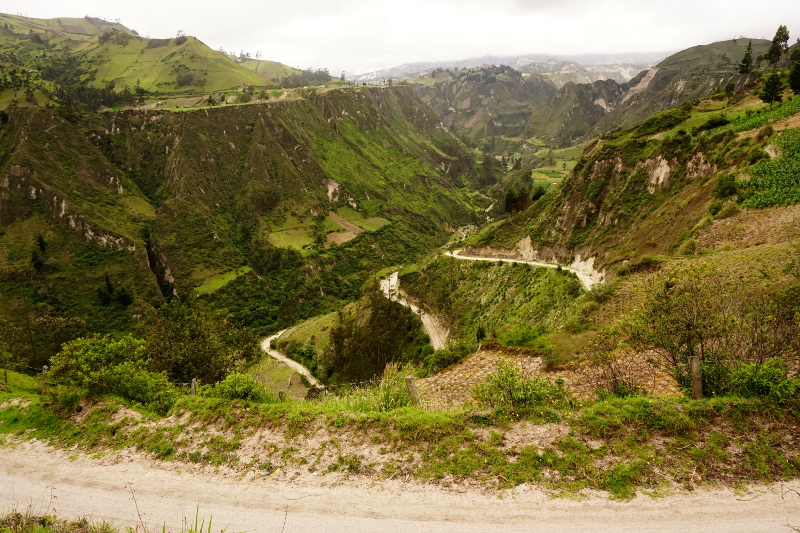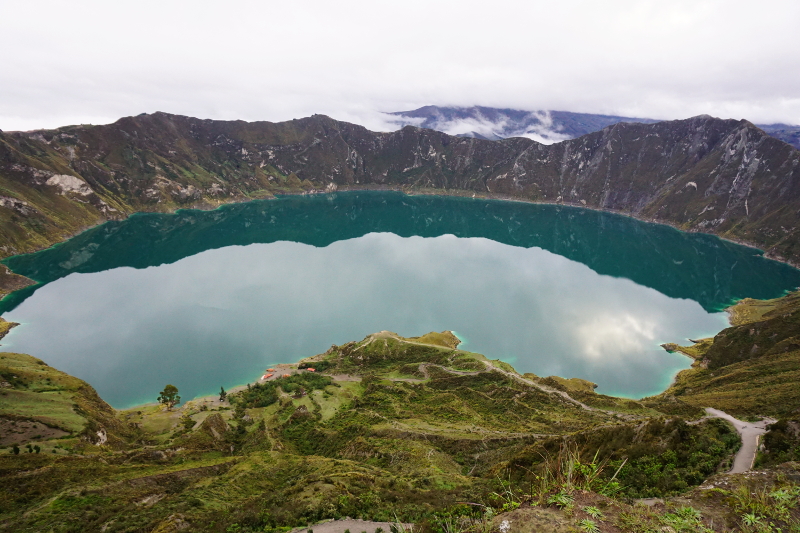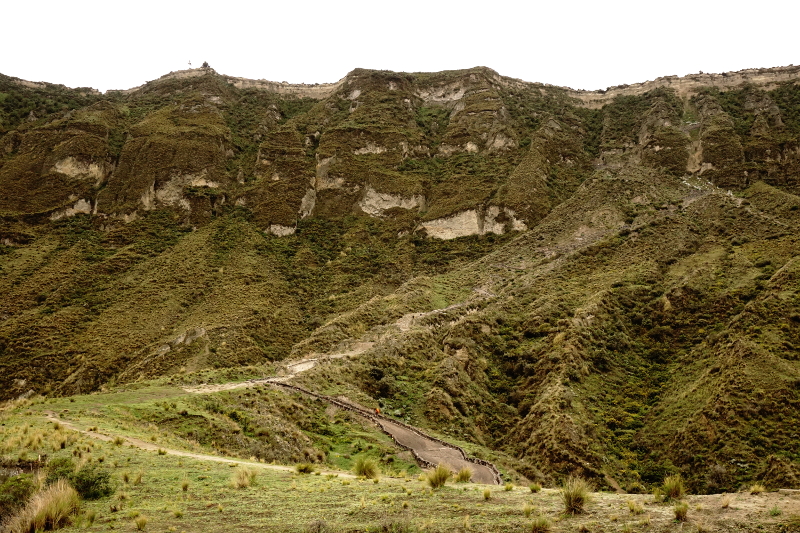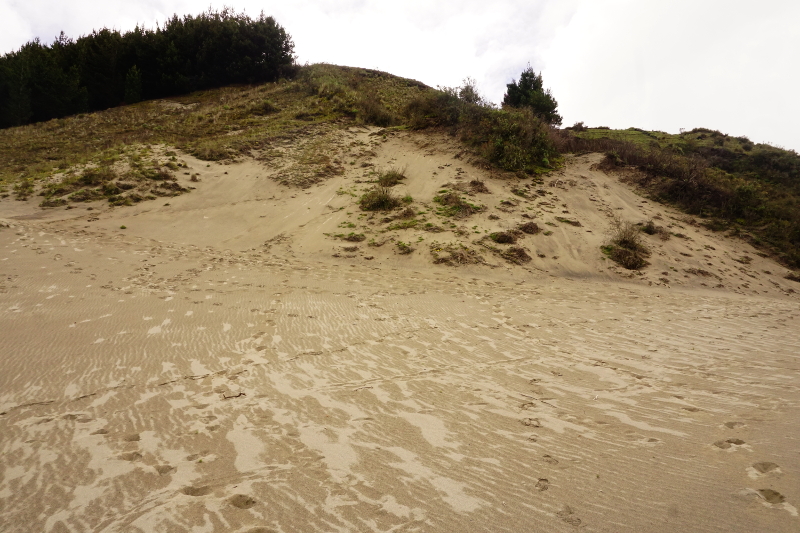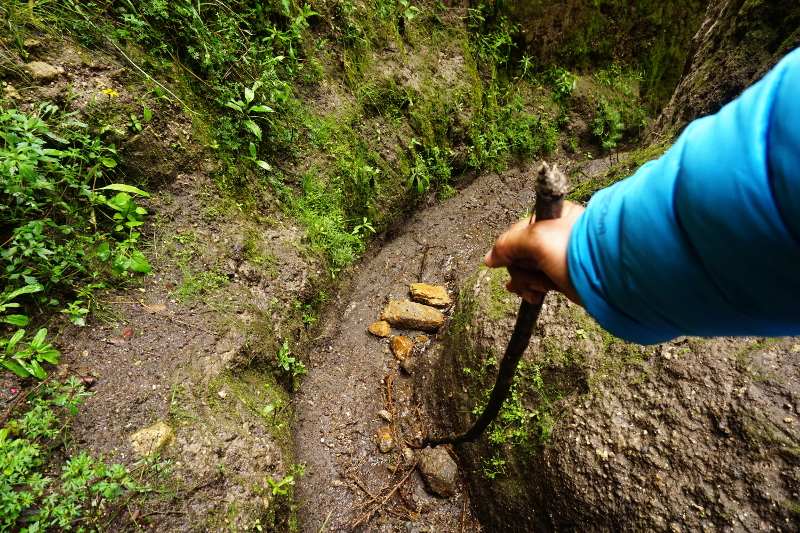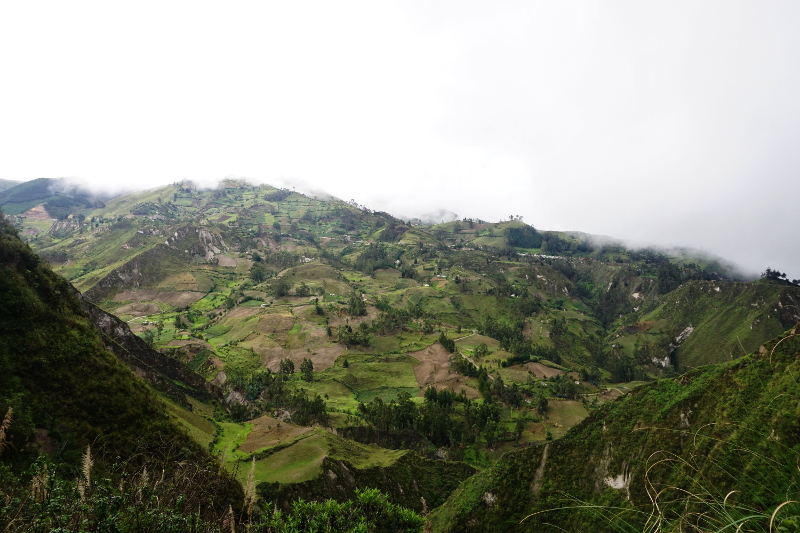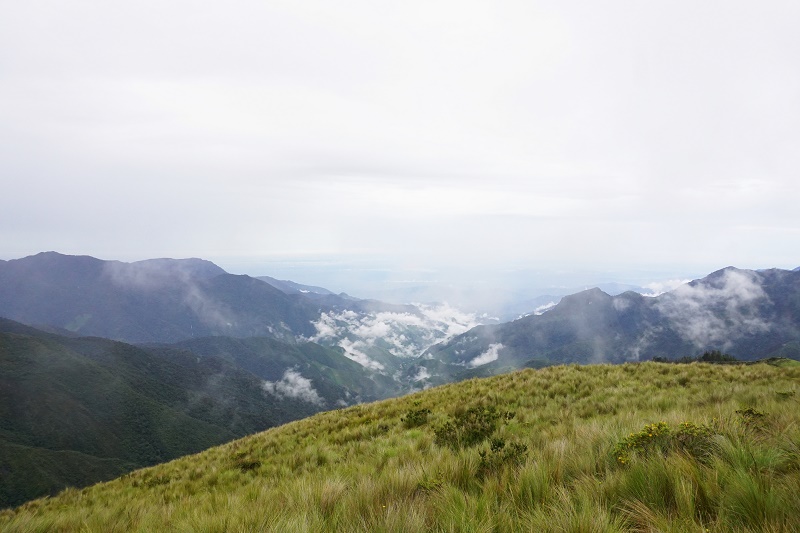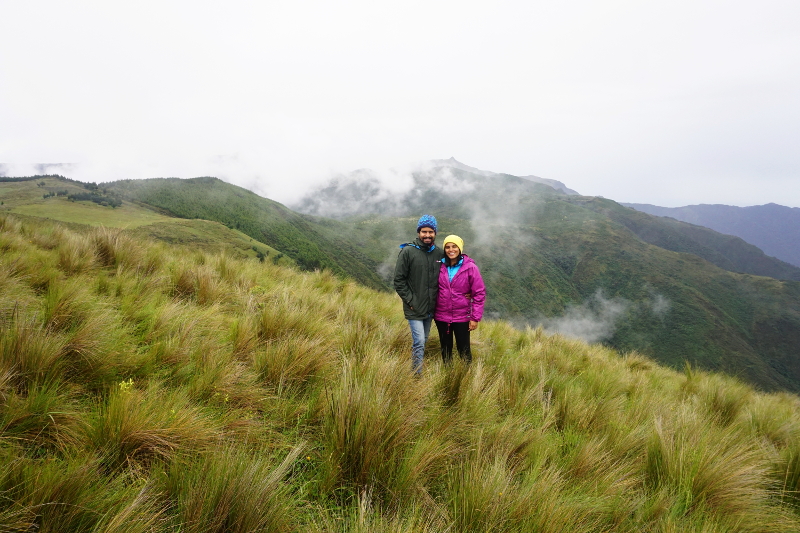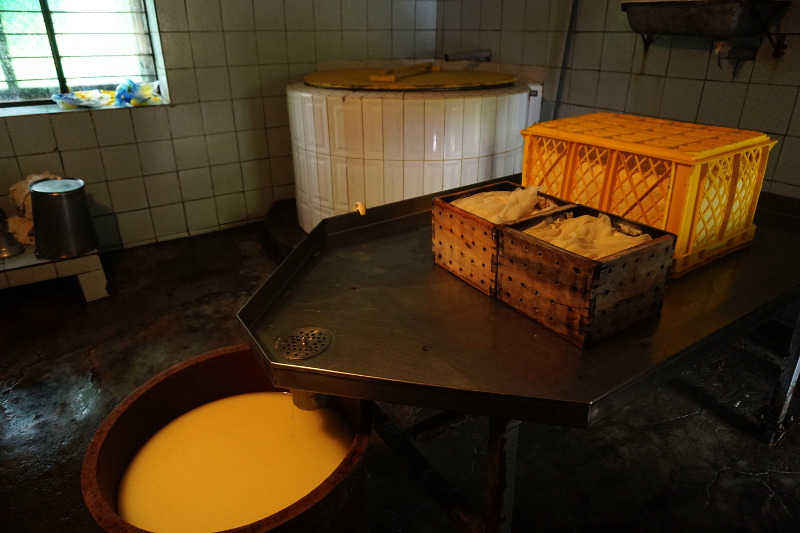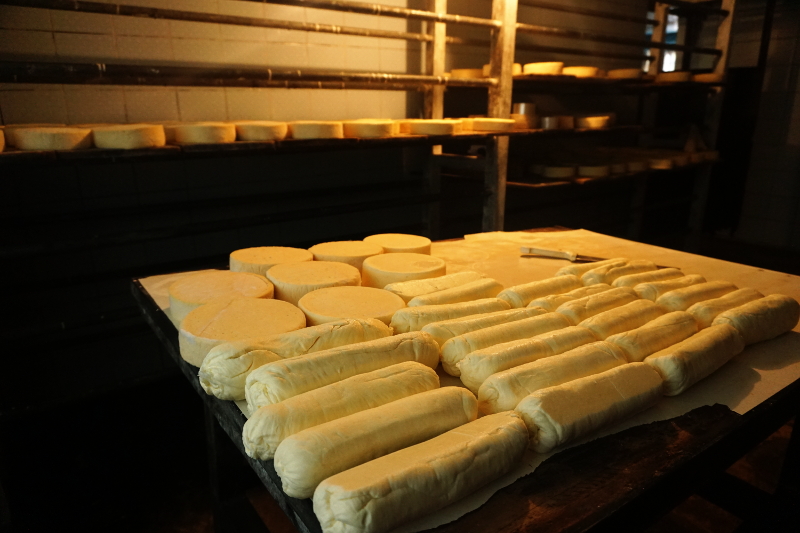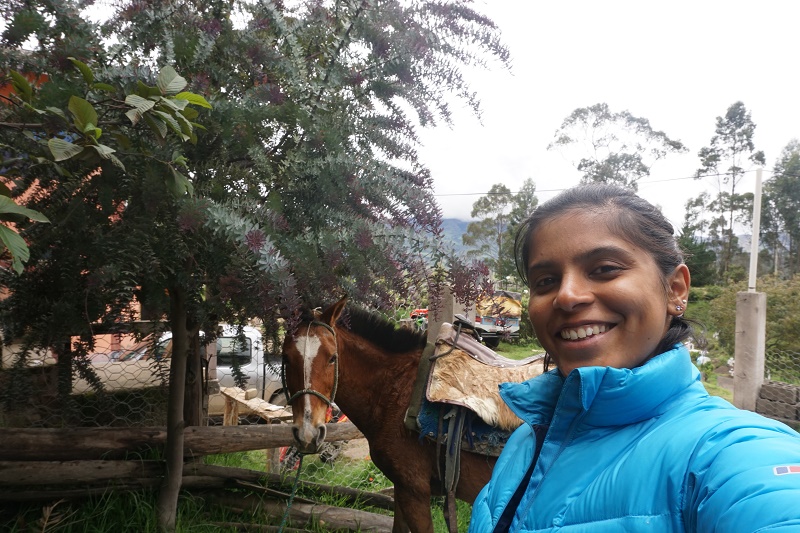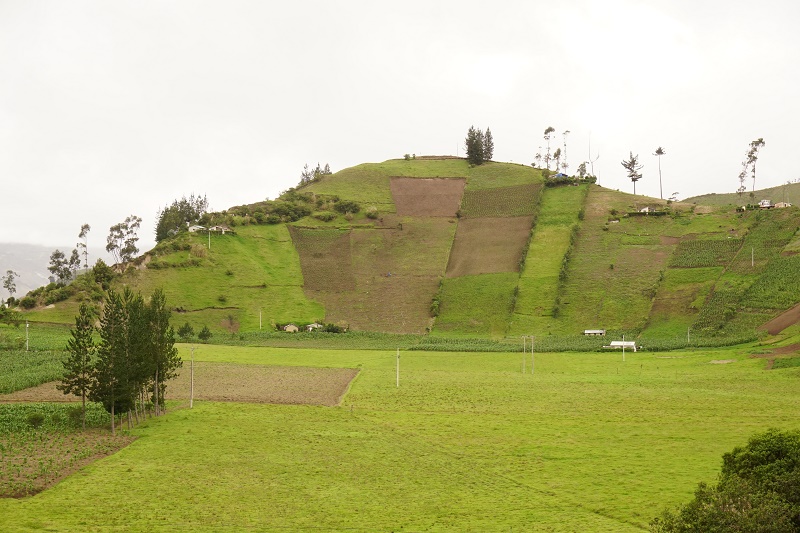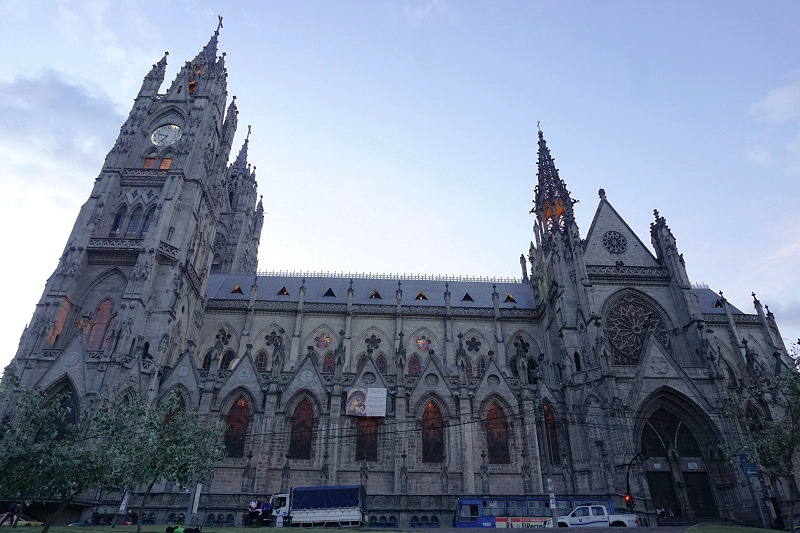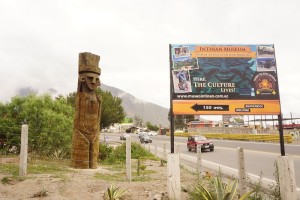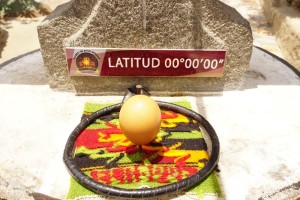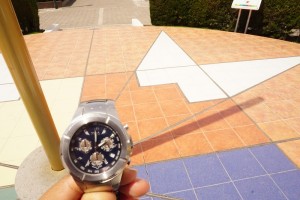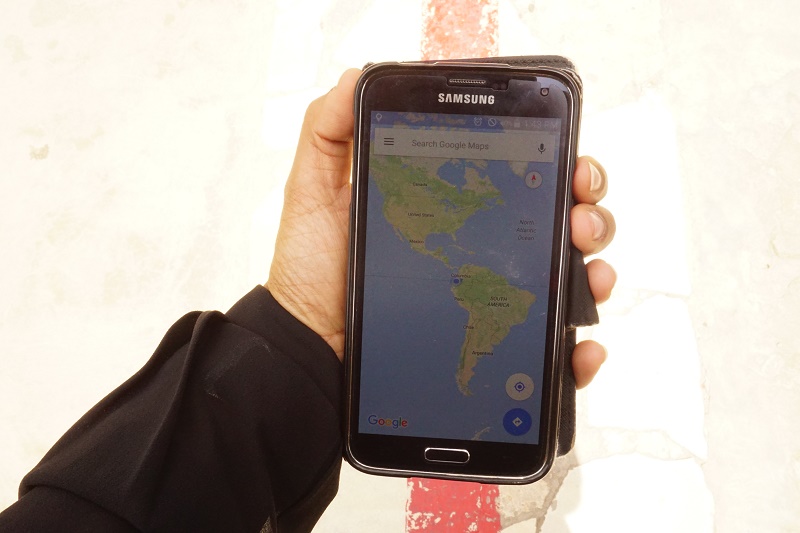While we were volunteering in Runtun, most afternoons were spent exploring the area around Banos. We indulged in hikes and some extreme sport as well. As Jopi, a friend we met while volunteering, said, Banos is a place to face your fears. And we did!
Condor del Vuelo
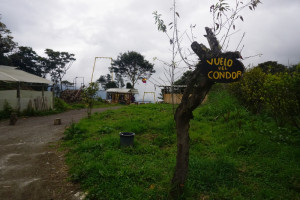 Baños has sort of become famous for swings at the edge of mountains. Condor del Vuelo was one such place with two huge swings at the edge of the mountain. The cost was too high, $5 for small swing and $10 for big one, but we enjoyed seeing the llamas and taking photos with them. Touristy but cute!
Baños has sort of become famous for swings at the edge of mountains. Condor del Vuelo was one such place with two huge swings at the edge of the mountain. The cost was too high, $5 for small swing and $10 for big one, but we enjoyed seeing the llamas and taking photos with them. Touristy but cute!
Casa de Arbol
Casa de Arbol is a famous fun park on the mountain above Baños. It is famous for swinging ‘at the end of the world’ with the Volcano Tungurahua in the background. In fact a photo taken here won a National Geographic Contest and it has become famous since then. It was 3.5 km uphill walk from our volunteer home. Turned out to be a very scenic and free walk up, while tour agencies charge $5 per person to take tourists.
Tip: It would be more economically to share a taxi with 4 or 5 persons (yes 5 passengers) to Casa de Arbol from Banos.
Upon arriving, we realised that the park was not very big. The entry fee was $1 per person and once you enter, there was plenty to do. We got there on a cloudy day but that wasn’t too bad. There are few playgrounds around, including a zip line! People can easily kill couple of hours here.
The ‘swing at the end of the world’ had a short line of tourists waiting before us. We both took turns on the swing and it did feel like I would fall down the mountain at first. We also learnt about Tungurahua the volcano, it’s eruptions and how the owner of Casa de Arbol is constantly monitoring the volcanic activities. It was a great half day event, a certain must do in Baños!
Hiking Down to Baños
As you know by now that we were living a few kilometres above Baños. To get down to Baños, we had a couple of choices – hitchhiking, taxi and walking down the trails. We tried the first a couple of times and when it didn’t work we simply walked down. The great thing about that was the view of Baños and walking through farms and forests. Cafe Del Cielo was a cafe and a hotel along the trail with spectacular views of Baños. And when we wanted to get back to the top, we taxi-ed it. Easy!
Biking
Shruti, Jopi and I decided to go biking on a free day. We hiked down to Banos, via Bela Vista (another incredible view), and went shopping around for bikes. The price ranges from $5 for dodgy bikes to $15 for extra large bikes. We settled on $7 bikes given the quality and the price.
The main biking route from Baños goes almost downhill towards Puyo but veers off to the older more picturesque road for 22 km until the town of Rio Negro which is also home to the final waterfall Pailon del Diablo. The shop owner gave us a map, 1 lock and a chain for security and we were off. The ride was smooth except for the cars, buses and trucks whizzing past. To be fair, cyclists riding from Baños to Rio Negro are a frequent sight and motorists are very careful. The view is also incredible with the mountains, rivers and waterfalls all along the way. The altitude drops 400 metres along the way and it gets quite hot by the finish.
Our first waterfall was incredible, the River Pastaza drops down and is joined by another stream from the mountains. The sight was incredible and we stopped there for 10 minutes.
After the first waterfall and the first tunnel, the cycle lane veers off to the old road which is only used by cyclists and chivas, a truck turned into a bus with music and a guide for tourists. The mountains at this starting point is breathtaking. A real gem of a place!
There are meant to be 7 waterfalls but either the guide didn’t inform us right or we didn’t follow right because we went from 1st waterfall to the 2nd and then straight away the 6th waterfall on the map. The 2nd waterfall wasn’t much and we didn’t stop there. The 6th, Manto de la Novia, was beautiful and we decided to take the cable car down. It was $1 per person for the cable car and a further $1 to get into the community and get extremely close to the waterfall. We only went down, crossed the bridge and took all the photos we needed.
This cable car was a makeshift job – it was a metal cage and the operator would start the engine once the doors were locked. On return, the operator started the machine again to bring you back up. After the photos, we got back in the cage and waited and waited some more. For 5 mins, we whistled, clapped and yelled to no avail. We all thought we would be stuck at the bottom of a mountain forever. It wasn’t a bad place to be stuck but we had to get to the next waterfall. Finally the operator got back from doing an errand and we came up. Phew!
Another 20 minutes ride and we reached the end of the trail. We parked our bikes and hiked down to Pailon del Diablo. Even before we got there, we could hear it roar but we only realised how big the waterfall was when we got closer. The waterfall was on a private property(!!) and the owners had created a cafe and an amazing viewing point for the waterfall. The whole thing seemed unreal as the whole river descended down 5 stories. To make it better, the stairs, the undercliff walk and viewing point made it look like a part of a fantasy film.
At one point, I tried to descend down the stairs to pose for a picture but got hit by a wall of water which was just a splash from the waterfall. It was unreal!
Maybe it was the perfect time of the year as the water was at it highest but Pailon del Diablo is the best waterfall we saw. Period. There was no point stopping for other waterfalls along the way.
At the end, we took a collectivo for $2 each which transported us and the bikes back up to baños. A great day!
Water Rafting
My first water rafting experience was in River Ganga, India but Shruti had never done it before. Baños seemed like the perfect place for it. Again, the three of us went down to Baños and booked ourselves in for a rafting trip. The cost was $25 and the rafting company picked us up from the shop at 1:30pm. It was a little strange as we kept picking up people in the van from all different companies. It seemed like all tour agencies used a few rafting operators. The operator seemed a bit roughshod as the wet suits were torn, shoes were not the right size and they were all in a hurry. However, it was still safer than when I did rafting in India so we didn’t complain.
Finally, we started driving to the river and reached there in an hour or so. At first glance, the river was fast and Jopi was extremely scared about falling out of the boat. We got our wetsuits on and were split into two groups, one English and one Spanish. Jopi being a Chilean and a native Spanish speaker was in the Spanish group. We received our tutorial on commands and instructions for safety. As we readied to go, it was decided that Jopi’s group would avoid some rapids while our more experienced and more adventurous group would go right through them. A wild ride!
To mark our groups personality, the guide gave us the name “CuyLeon” meaning Guinea Pig Lion in Spanish. We faced our first rapid soon after we left the riverbank. It was a big rapid, a 3 in scale. We followed the instruction right to the tee and came out of it easy. We all screamed ‘CuyLeon’ and hit our paddles together in celebration.
We went through some more small rapids without an issue and came to a calm patch of the river. The mountains were behind us and everything in front of us was the Amazon Jungle and we floated on river Rastaza. An amazing view!
At this stage, the guide’s girlfriend got very adventurous and moved to the front of the raft, sitting on the edge holding the rope. We went through several more rapids. We paddled hard each time and were out of danger quickly. A few of us swapped our places for the front. My turn came after 90% of the rafting was done. I was sitting at the front enjoying the view when we approached a massive rapid. All of a sudden, I was under water. Disaster! The raft had flipped.
The next series of events happened so fast that its impossible to put time to it. At first, I was trying to stay afloat but we were in a rapid. The wave kept hitting me from the back of my head, submerging me very often. The next thing I was trying to grab on to something which happened to be another guy from the raft. Both of us managed to grab the flipped raft as used it as a float. Shruti then started screaming at us to float on our backs and let go of the raft. The safety canoe came by and I held on the front while two others were trying to grabbed it from the back. There was too much weight on the canoe and the canoe flipped too! *panic* We had to let it go but we were getting very close to the wall of the river with the rapid pushing us towards it. We tried swimming away and eventually the rapid ended and Jopi’s raft rescued us.
The whole episode was over under 1 minute but it seemed like a lifetime. It took a few mins to recover and get back on our raft. It was a scary and loving moment for us too. Shruti knew I couldn’t swim well so was scared for me and for my part I hadn’t seen her since the canoe flipped. I was worried and looking for her as I was rescued by the other raft. At the end, we hugged and kissed knowing we had survived a scary moment. What doesn’t kill you makes you stronger! Definitely something we won’t be telling our kids for a while.
